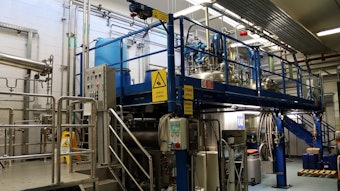It’s no surprise that cosmetics is a multibillion dollar industry. The search for attractive solutions to very specific personal care and beauty concerns is constant. On a daily basis, droves of consumers visit their local drug stores, retailers or salons of choice seeking the right answers to their beauty needs.
But for companies to compete successfully for that ever-discriminating consumer’s dollar, products need to offer a strong value proposition. Whether the product offers 30% more hydrating conditioners or a shade that lasts five hours longer, cosmetic chemists must create and marketers must offer products that pass muster and break through the clutter of competition.
The pressure to deliver these solutions can be intense. Yet, anyone who has worked with cosmetic chemists knows they are a naturally curious group of experts who are constantly asking questions and developing theories. Following these paths ultimately leads to discovering new and better products that will attract consumers and help improve the company’s bottom line.
However, these chemists needn’t do it all alone. Technology collaboration with a trusted partner can be an efficient way to discover smart solutions that add value to the final product. Microencapsulation technology—the process by which solid or liquid core materials are encased in tiny shells or capsules one micron to several hundred microns in diameter—is an apt example. While the technology isn’t new to the cosmetic industry, it plays an important and growing role in product development. Cosmetic chemists have come to know microencapsulation as a way to protect unstable, sensitive materials while improving the ability of those materials to be processed as well as an ideal carrier system for active ingredients.
When presented with questions about microencapsulation in the past, cosmetic chemists would normally consult with private providers of microcapsules to determine their options and outsource small production projects. To meet increasing demand for truly unique solutions, however, the paradigm may be shifting toward fully collaborative partnerships.
Encapsulating Partnership and Innovation
Effectively employing microencapsulation to create success on shelf requires deep technical resources, craftsmanship and extensive knowledge—and, therefore, partnerships in this aspect of formulating are often advantageous. Scale and batch quantity capabilities must be considered in establishing these partnerships, and, because the microencapsulation requirements and goals vary product to product, it is advantageous to find partners willing to work hand-in-hand to create product solutions that meet those customer-specified properties.
Therefore, for an effective partnership, the microencapuslation partner must understand both a company’s products and objectives, with an opportunity assessment to determine whether microencapsulation is the right answer as the next logical step. A market-centric validation process facilitates determination as to whether the opportunity is attractive enough to pursue and whether technical hurdles can be overcome. A successful outcome leads to a disciplined, market-driven approach that traverses parallel business and technical paths.
In addition, product innovation is essential to establishing a competitive advantage, especially within the ever-evolving cosmetic segment. A strategic partnership can enable new product ideas and processes or improve upon existing ones by eliminating a processing step, using a less pricey ingredient or incorporating a new ingredient that won’t work without encapsulation. Leveraging expertise will drive long-term value and establish a strategy for continued product advancement.
Ted E. Goodwin is vice president of business development for Appleton. His 28-year career at the company includes significant time in its research and technical organization before creating and leading the company’s the new business development area. www.appletonideas.com










